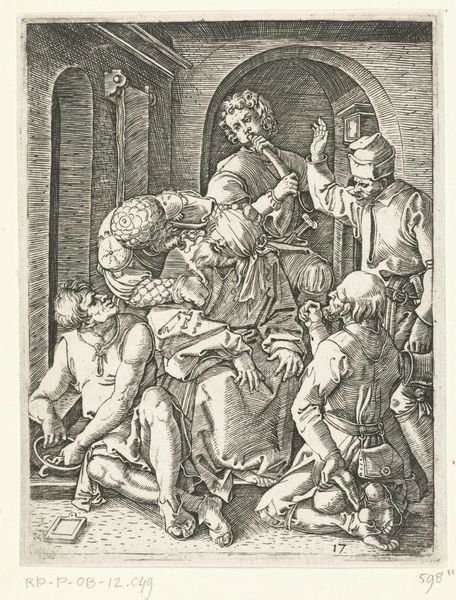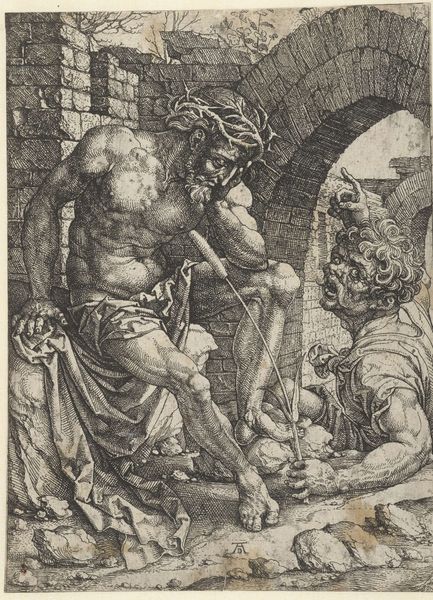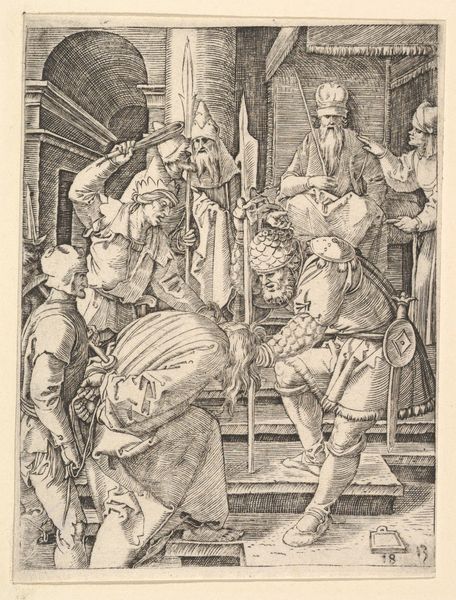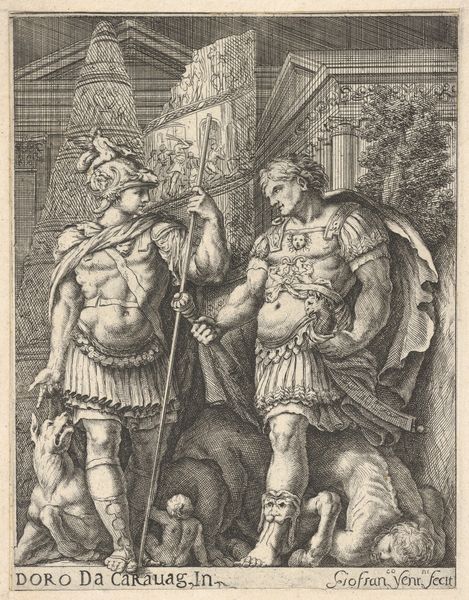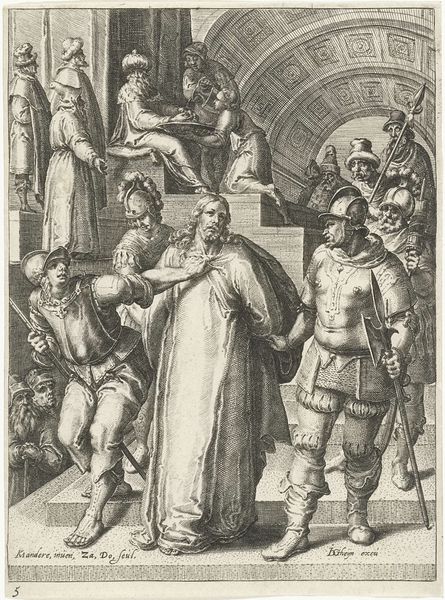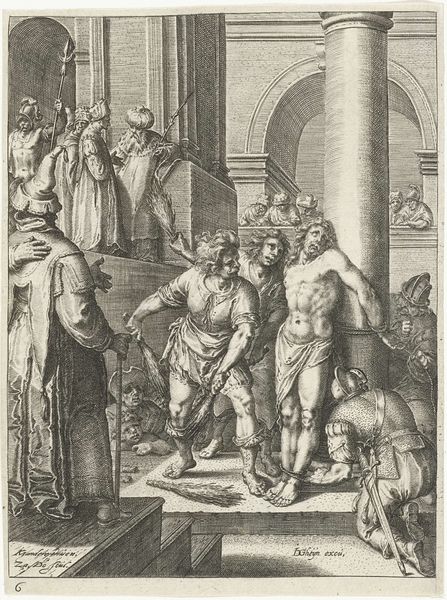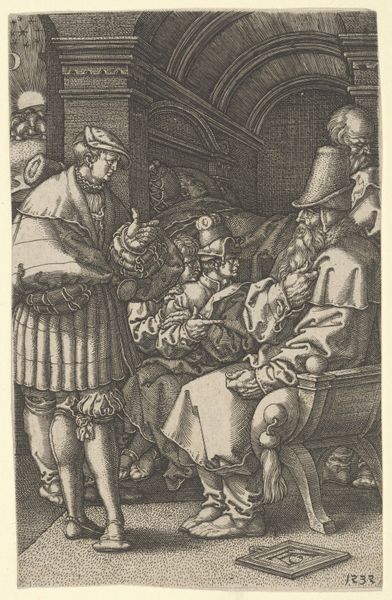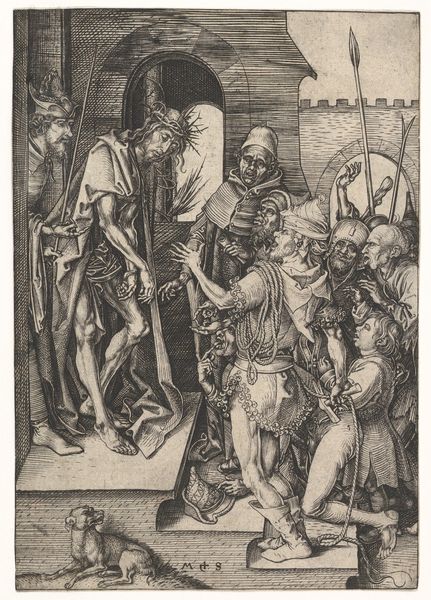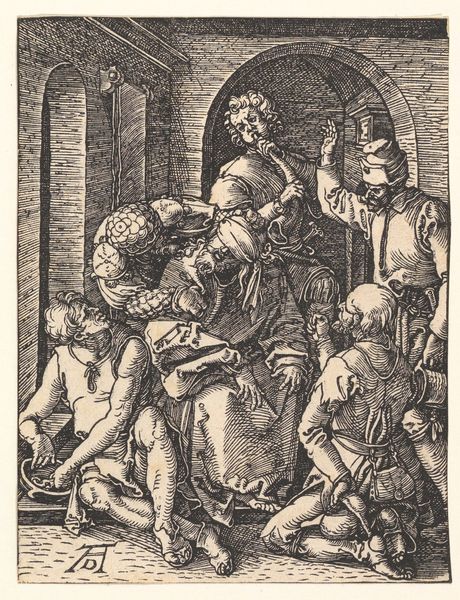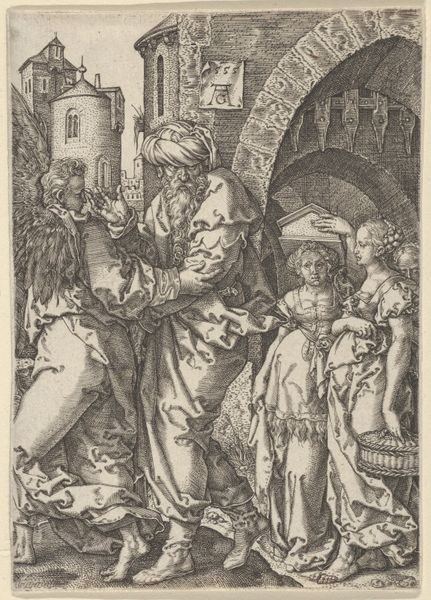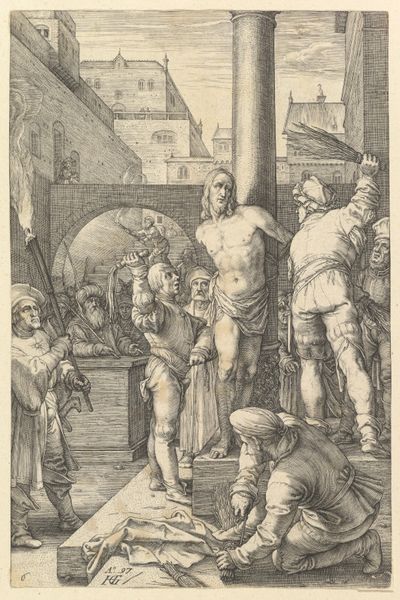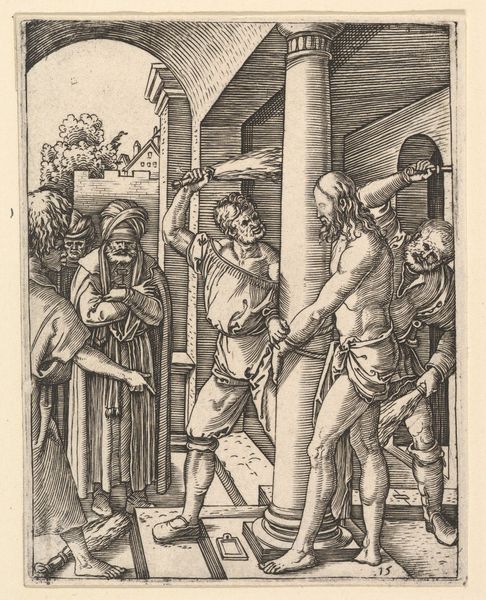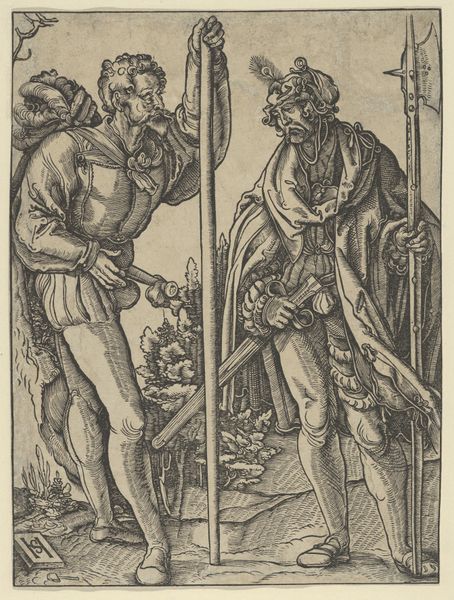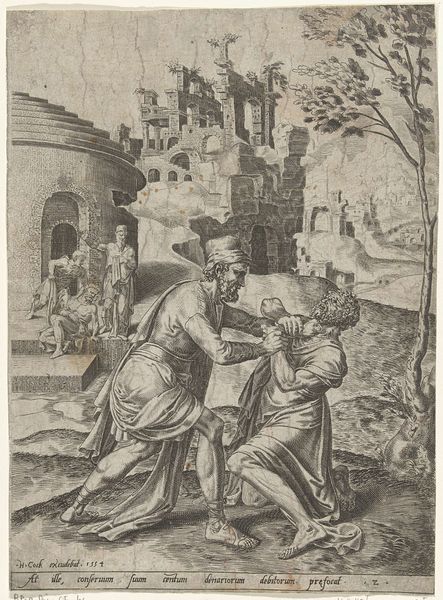
print, engraving
#
narrative-art
# print
#
mannerism
#
history-painting
#
engraving
Dimensions: height 255 mm, width 190 mm
Copyright: Rijks Museum: Open Domain
Curator: This engraving, "Dorstigen laven," or "Refreshing the Thirsty," was created by Dirck Volckertsz Coornhert in 1552 and currently resides in the Rijksmuseum collection. The piece is remarkably intricate given the limitations of the medium, printmaking. What are your initial thoughts? Editor: The first impression is overwhelmingly stark—the contrast, the contorted figures...there’s an unease here that almost makes the offering of water seem violent rather than merciful. It feels deeply symbolic. Curator: Indeed, the Mannerist style really amplifies that sense of tension. Notice the engraver’s attention to line, the build up of strokes to render textures like the rough stonework, fabrics, the aging skin, so much nuance achieved through labor. We have to remember each line etched laboriously by hand. Editor: And those lines certainly convey a strong message. The very act of giving water, so elemental, is loaded. The man receiving the water is skeletal, almost demonic in his desperation. His open mouth is almost serpentine. I see the waters as transformative; almost biblical in implication. It echoes themes of redemption. Curator: It makes you wonder what processes, what workshops or perhaps even the Reformation debates of the time shaped such symbolism. Consider too how printmaking allowed this potent iconography to reach a far wider audience. Were common people buying these or was it destined for the upper classes? How might either reception influence interpretations? Editor: That reach is important. This symbol set works across many viewers in different contexts. A potent image travels through history, charged with changing yet consistent meaning. I keep coming back to this sense of torment—a visual language, deeply rooted in our collective fears of want. Curator: Exactly! By examining the medium's reproducibility alongside Coornhert's craftsmanship, we expose these fascinating connections between labour, access, and this complex visual dialogue, a story retold and remade with each impression. Editor: It makes you rethink what sustenance really means. Beyond water, what are we truly thirsting for? Curator: That's it exactly. Examining it through both our perspectives makes us consider those wider historical impacts too.
Comments
No comments
Be the first to comment and join the conversation on the ultimate creative platform.
